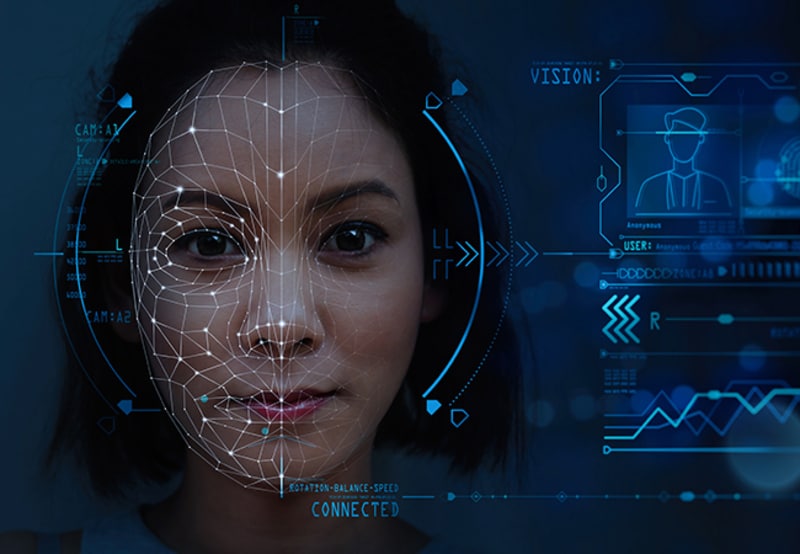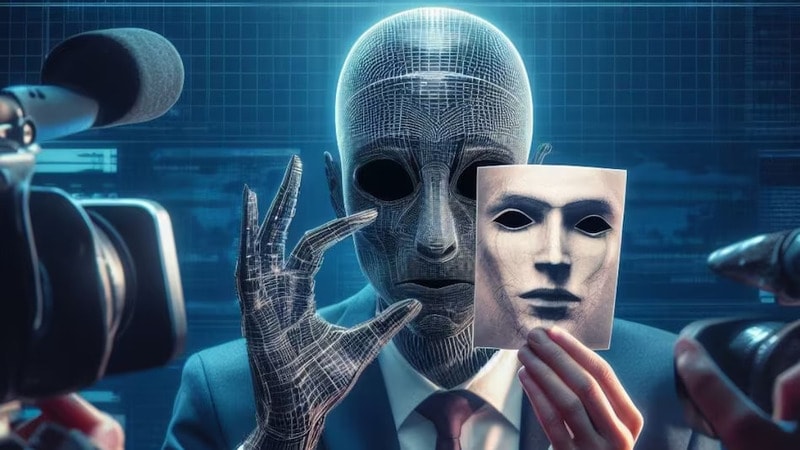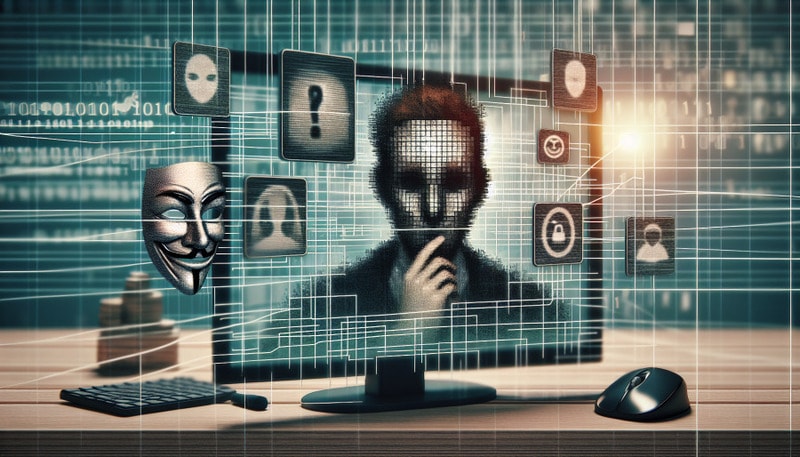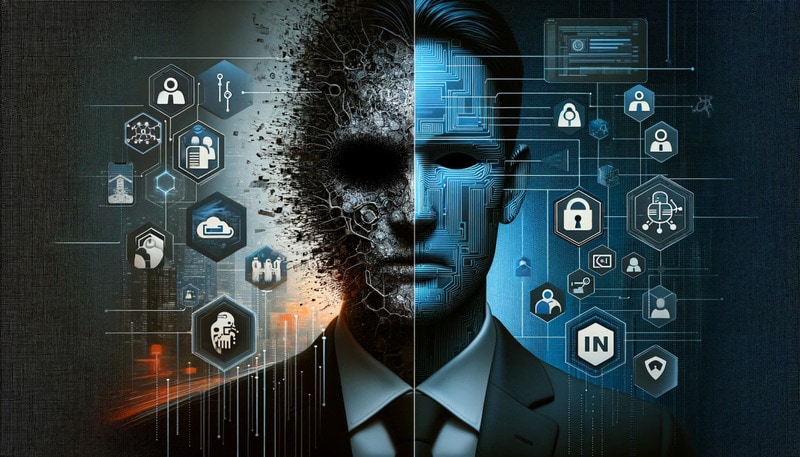Deepfake technology is rapidly changing how the public creates and consumes media. A deepfake uses artificial intelligence to create realistic but fake images or videos. Deepfake videos can make people appear to say or do things they never did.
This technology has significant impacts on the world, both positive and negative. In this article, you will be able to explore what deepfakes are, how to recognize them, and how to use them responsibly. This guide aims to promote awareness and ethical use of deepfakes, ensuring this powerful tool is used for good.

In this article
Part I. How Deepfake Technology Works
Deepfake videos are digital creations that use artificial intelligence (AI) to make people appear to say or do things they never actually did. These videos are made using a technique called “deep learning,” which involves training a computer program to recognize patterns in large amounts of data. The program learns to mimic their appearance and movements very convincingly by analyzing many images and videos of a person.
A deepfake video typically starts with collecting a large number of images and videos of the target person. These media files are used to train an AI model to understand the person’s facial expressions, voice, and mannerisms. The model then uses this information to create a new video where the person appears to say or do something they didn’t actually do. This process can make the fake content look and sound very realistic.

How Deepfake Technology Works
The creation of deepfake videos involves several steps:
Gather a vast number of photos and videos of the person you want to create a deepfake of. These media files serve as the foundation for training the AI model.
Use these collected media files to train a neural network. This neural network learns to recognize and replicate the unique characteristics of the person’s face and voice. The training involves exposing the AI to thousands of images to understand different angles, lighting conditions, and facial expressions.
Once the model is trained, it can generate new images and videos. The AI overlays the learned characteristics onto another video, replacing the original person’s face with the target person’s face. The result is a new video that looks like the target person is performing the actions in the original video.
Finally, the deepfake video is refined and edited to enhance its realism. This step may involve adjusting the lighting, facial expressions, and synchronization of the audio to match the person’s lip movements accurately.
Real-World Examples and Implications
Deepfake technology has been used in various ways, from entertainment to misinformation:
- Deepfake technology can bring actors back to life or de-age them for specific roles in movies. For instance, the Star Wars franchise used deepfakes to recreate young versions of characters.
- Deepfakes can be utilised to spread false information. For example, a deepfake video of a politician saying something controversial can go viral, leading to public confusion and mistrust.
- Education and Training.On a positive note, deepfakes can be used for educational purposes, such as creating realistic simulations for training medical professionals or actors.
While deepfake technology holds incredible potential for creativity and innovation, it also poses significant risks. Understanding how deepfake videos are made and being aware of their implications can help us use this technology responsibly.
Part II. How To Identify Deepfake Videos
Deepfake videoscan be incredibly realistic, making it difficult to tell if what you’re watching is real or fake. However, some common characteristics and tools can help you spot deepfakes. By staying vigilant, you can better protect yourself from being deceived by these fake videos.

Common Characteristics of Deepfake Videos
Even the most convincing deepfakes often have subtle signs that can give them away. Here are some common characteristics to look out for:
- Unnatural Facial Movements.Deepfakes can struggle with capturing the natural fluidity of facial expressions. Look for awkward or stiff movements, especially around the mouth and eyes.
- Inconsistent Lighting.Pay attention to the lighting on the person’s face. If the light and shadows don’t match the rest of the scene, it could be a sign of a deepfake.
- Blurry or Mismatched Edges.The edges of the face, especially around the hairline, might appear blurry or mismatched. This is because the AI often struggles to blend the fake face perfectly with the real background.
- Eye Blinking.Early deepfakes often had issues with natural blinking patterns. If the person in the video blinks too rarely or in a strange manner, it could be a deepfake.
- Lip Sync Issues.Check if the lip movements match the spoken words. Mismatched audio and visual can indicate a deepfake video.
Tools and Techniques for Spotting Deepfakes
Several tools and techniques can help people identify deepfake videos:
- AI Detection Tools.There are specialized AI tools designed to detect deepfakes. Tools like Deepware Scanner and Reality Defender analyze videos and provide a likelihood score of them being fake.
- Reverse Image Search.Conduct a reverse image search on keyframes from the video. If you find the same frames in other unrelated videos, it might be a deepfake.
- Frame-by-Frame Analysis.Watch the video frame by frame to spot inconsistencies. Deepfakes might look convincing in motion but show flaws in individual frames.
- Metadata Examination.Analyzing the metadata of a video can reveal its origins and any signs of manipulation. Tools like InVID can help with this.
- Crowdsourced Fact-Checking.Platforms like Reddit and specialized forums often have communities dedicated to analyzing and debunking suspected deepfakes.
Importance of Vigilance in Consuming Media
In today’s digital age, being vigilant while consuming media is crucial. Deepfakes can spread misinformation and cause significant harm, from damaging reputations to influencing political opinions. By learning to identify deepfake videos, you can help combat the spread of false information.
- Verify Sources.Always check the credibility of the source. Trustworthy news outlets are less likely to distribute deepfakes.
- Cross-Check Information.Look for multiple sources confirming the same information. If a sensational video is only available from one source, it’s wise to be skeptical.
- Stay Informed.Follow the latest developments in deepfake technology. As AI improves, so do the methods for creating and detecting deepfakes.
By staying alert and using the appropriate tools and techniques, you can protect yourself and others from the dangers of deepfake videos.
Part III. Ethical Use of Deepfakes
Deepfake technology, while often associated with negative uses, also holds significant potential for positive applications. By focusing on ethical use, we can harness this technology to benefit various fields creatively, artistically, and educationally.

When used responsibly, deepfakes can have many beneficial uses. For instance, filmmakers can use deepfake technology to bring historical figures to life or to create special effects that would be impossible otherwise. This enhances storytelling and allows for innovative visual experiences. Here are more ethical uses of deepfake technology:
- Creative and Artistic Potential
Artists and creators can leverage deepfake technology to push the boundaries of their work. Musicians can use deepfakes to create music videos that they can perform in different eras or styles. Visual artists can experiment with deepfakes to explore new forms of expression, blending reality with imagination in unique ways.
- Educational and Training Opportunities
Deepfakes offer exciting possibilities for education and training. In medical training, deepfake simulations can help students practice procedures in a realistic yet controlled environment. Language learning apps can use deepfakes to create interactive and engaging lessons with virtual tutors who can demonstrate correct pronunciation and usage.
- Educate Users on the Risks and Dangers of Misuse
While embracing the positive uses of deepfakes, educating users about the risks and dangers of misuse is crucial. Deepfakes can spread misinformation, create fake news, and damage reputations. Raising awareness about these risks can encourage responsible use of the technology.
- Advocate for Transparency and Accountability
Promoting transparency and accountability is essential in the ethical use of deepfakes. Users should always disclose when content is a deepfake, ensuring that viewers are not misled. Additionally, advocating for regulations and ethical guidelines can help prevent misuse and protect individuals from harm.
While deepfake technology has risks, its positive applications in creativity, education, and training are significant. Using this technology responsibly and ethically enables the public to unlock its full potential while minimizing negative impacts.
Note: Want to make ethical deepfake videos? Try FaceHub. It's user-friendly and promotes responsible content creation. Start creating ethical content with ease!
Conclusion
Deepfake videos, created using advanced AI, significantly impact the world. You can protect yourself from misinformation by understanding how these videos work and learning to spot them. Ethical engagement with deepfake technology opens doors to creative, educational, and training opportunities.
Using this powerful tool responsibly is crucial, promoting transparency and accountability. As you look towards a future of innovation, ensure deepfakes are used for good, enhancing your life while minimizing risks. It would be best if everyone could harness deepfake technology’s potential for a positive impact.




